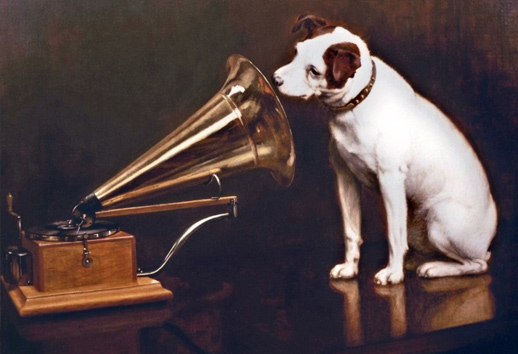|
COLUMN ⸜ music & technology HISAO NATSUME presents
IN SEARCH FOR THE LOST GREAT PIANISM |

|
Music & technology
text HISAO NATSUME |

|
No 251 April 1, 2025 |
˻ I ˺ CHOPIN PLAYED BY CHOPIN HIMSELF; Liszt played by Liszt himself. The only tragedy in my life is that I was born at a time when you can no longer hear them playing live. What comforts me in this disappointment are old 78 rpm recordings of 19th-century Romantic pianists. 
⸜ The “younger” and better of only two known photographs of Frederic Chopin. It was taken in 1849, the older one in 1847. • photo by Louis-Auguste Bisson/Wikipedia, public domain The reason I painstakingly listen to noisy vintage 78 rpm records (it was really hard to find records of this type in Japan!) is the joy of finding fragments of Chopin and Liszt in them. I thought that if I could collect these fragments and create a fossil-like montage, I would be able to come close to the performances of both composers (yes, this is really possible). In the following article, I would like to say a few words about pianists who are heirs to the Chopin tradition and the 78rpm records associated with them. ˻ I ˺ Chopin’s grandchildren CHOPIN WAS BORN IN WARSAW and was active in Paris, and his personal life had a great influence on his work. He also left his mark in both Poland and France as a piano teacher. Neither Chopin nor his pupils left any recordings behind. However, Karol Mikuli (Poland, 1821-1897), Georges Mathias (France, 1826-1910) and Émile Decombes (France, 1829-1912), who became teachers, were mentors to pianists who carried on Chopin’s tradition. Princess Marcelina of Radziwill Czartoryska (Poland, 1817-1894) and Antoine François Marmontel (France, 1816-1898), a pupil of Chopin's friend Charles-Valentin Alkan (1813-1888), also played a role in passing on this tradition. ˻ II ˺ BORN IN WARSAW Raoul von Koczalski was a valued pupil of Mikuli, who made his debut as a piano prodigy. Mikuli carefully trained Koczalski to be a pianist who inherited the Chopin tradition. Koczalski had his first public performance in 1888 (at the age of four!). 
⸜ From the left: Aleksander Michałowski, Raoul von Koczalski • public domain It is also fortunate that he recorded Nocturne in E-flat major, Op. 9, No. 2 in two versions, an acoustic (1924) and an electric one (1938), at 78 rpm, on a German Polydor disc, based on a score in which Mikuli recorded a variant improvised by Chopin. This information can be found on the disc's liner notes. As you might guess, there are some differences between these versions; the second one was reissued on the Sakuraphon album Great Chopinzees (SKRP78011). Michałowski also recorded this Nocturne with variants at the Favorite label in Warsaw in 1910. These recordings give you the feel of traditional Polish Chopin pianism, which places great emphasis on improvisation. We should add that Koczalski recorded about 100 Chopin 78 rpm records, and his romantic and elegant playing style has attracted the attention of not only Chopin scholars, but also young pianists. 
⸜ Record plate liner of the Nocturne in E-flat major, Op. 9, No. 2 • photo by Hisao Natsume Aleksander Michałowski, the leading Polish pianist of his time, epitomizes the daring side of Chopin with his virtuoso approach. His arrangement of Chopin's Minute Waltz-Paraphrase is a popular virtuoso piece. In addition to four recordings by Michalowski himself (G&T, rec. 1905 – two versions, Syrena-Electro, rec. 1930, and Polish Columbia, rec. 1936), there is also a recording by the Pole Karol Szreter (German VOX, 1924; this has been reissued on the aforementioned Sakuraphon Great Chopinzees CD) and a recording by Jerzy Żuraulew on 33 rpm. The polonaises and mazurkas are full of exceptional rhythm and dynamics. As for Scherzo No. 1 in B minor, Op. 20, recorded in later years, it moves us with the fiery passion and technique that Michalowski retained despite the loss of his eyesight. It should also not be forgotten that Michalowski's favorite pupils, Jerzy Żuraulew (1886-1980) and Zbigniew Drzewiecki (1880-1971), were the founding fathers of the International Chopin Competition. |
Żuraulew was a pianist who followed in his teacher's footsteps, while Drzewiecki became a successful pedagogue and made recordings playing Chopin’s Pleyel piano. As an aside, Michalowski's 78 rpm record is one of the rarest piano recordings in the world. 
⸜ Record plate liner of the Waltz in D minor performed by Leo Sirota and arranged by Moriz Rosenthal • photo by Hisao Natsume Moriz Rosenthal, who studied under Franz Liszt and Mikuli, also left behind a virtuoso arrangement of the Minute Waltz. Unfortunately, Rosenthal did not record this Etude/Waltz, but his performance pf Etude, Op. 10-1 (Parlophone, rec. 1931) is astounding, amazes us with perfect control, from delicate pianissimo to rich fortissimo, and is full of poetry at the same time. What is more, Waltz in C sharp minor, Op. 64-2 (Parlophone, rec. 1931) leaves an unforgettable aftertaste with its melancholic beauty. His version of Chopin/Liszt/Rosenthal Chant Polonaise op. 74-1 The Maiden's Wish (Victor, rec. 1936) is also an unparalleled masterpiece. ˻ III ˺ PADEREWSKI'S EARLY TEACHER was Juliusz Janota, who, along with his daughter, Natalia Janota, was acquainted with Chopin's favorite pupil, Princess Marcelina Czartoryska. Natalia owned the manuscript of Chopin’s Study Fugue in A minor, based on which she recorded her performance for G&T in 1904. Although not particularly well known, there is also an unreleased recording of Tarantella, Op. 43 (G&T, ca. 1906). The famous music critic Harold C. Schonberg gave Janota a harsh assessment, saying that she was “just banging on the piano.” However, I consider these recordings to be important monuments in the history of Chopinism. 
⸜ Natalia Janota • public domain Ignacy Jan Paderewski is a well-known great pianist of the Leschetizky school. Between 1911 and 1938, he recorded more than 120 78 rpm discs. Paderewski's Chopin is not only heroic, but also full of beautiful singing tone and improvisation. It is clear that Paderewski shares the same temperament as Chopin, who was called “the poet of the piano”. Paderewski's earlier performances tend to be better than his later ones, and the sessions he recorded for HMV in 1911 (Switzerland, Morges) and 1912 (London) are must-have recordings for any Chopinophile. The first recording session, which took place at Paderewski's home in Morges, Switzerland, in 1911, features the antique sound of his beloved Pleyel piano, reminiscent of Chopin's time. The London recording of Mazurka No. 13 in A minor, Op. 17-4 seems to reach into the same realm as Chopin. Perhaps listening to him playing will allow you to understand the Polish “soul”. Paderewski also recorded definitive performances of Chopin's popular pieces, such as the Nocturne No. 2 in E-flat major, Op. 9-2 and Etude in E major, Op. 10-3 (both recorded in 1930). Paderewski's autobiography, which was published in Japanese, has become a must-have book for many Chopin fans. ˻ IV ˺ THREE POLISH CHOPIN PUPILS have passed on that special “something” that Chopin possessed to the next generation. The recordings of the great Polish Chopinists motivated me to understand Chopin more deeply. In this way, Chopin’s own performance continues to live on tenuously among old, noisy recordings. Are you not excited by this vision?! 
⸜ Record plate liner of the Waltz - Paraphase performed by Karol Szreier and arranged by Aleksander Michałowski • photo by Hisao Natsume Next time I will present another aspect of my collection: the continuation of Chopin's tradition by his French pupils. Stay tuned! ● ▌ About the author HISAO NATSUME was born in 1967 in Tokyo, Japan, where he lives. He is a piano music researcher, mastering engineer, composer, musician and graphic designer. He founded and runs the Sakuraphon label, which aims to reissue the more than 5,000 78 rpm shellac records he has collected over the past 30 years. More about the author and the Sakuraphon label → HERE. |
main page | archive | contact | kts
© 2009 HighFidelity, design by PikselStudio,
projektowanie stron www: Indecity







